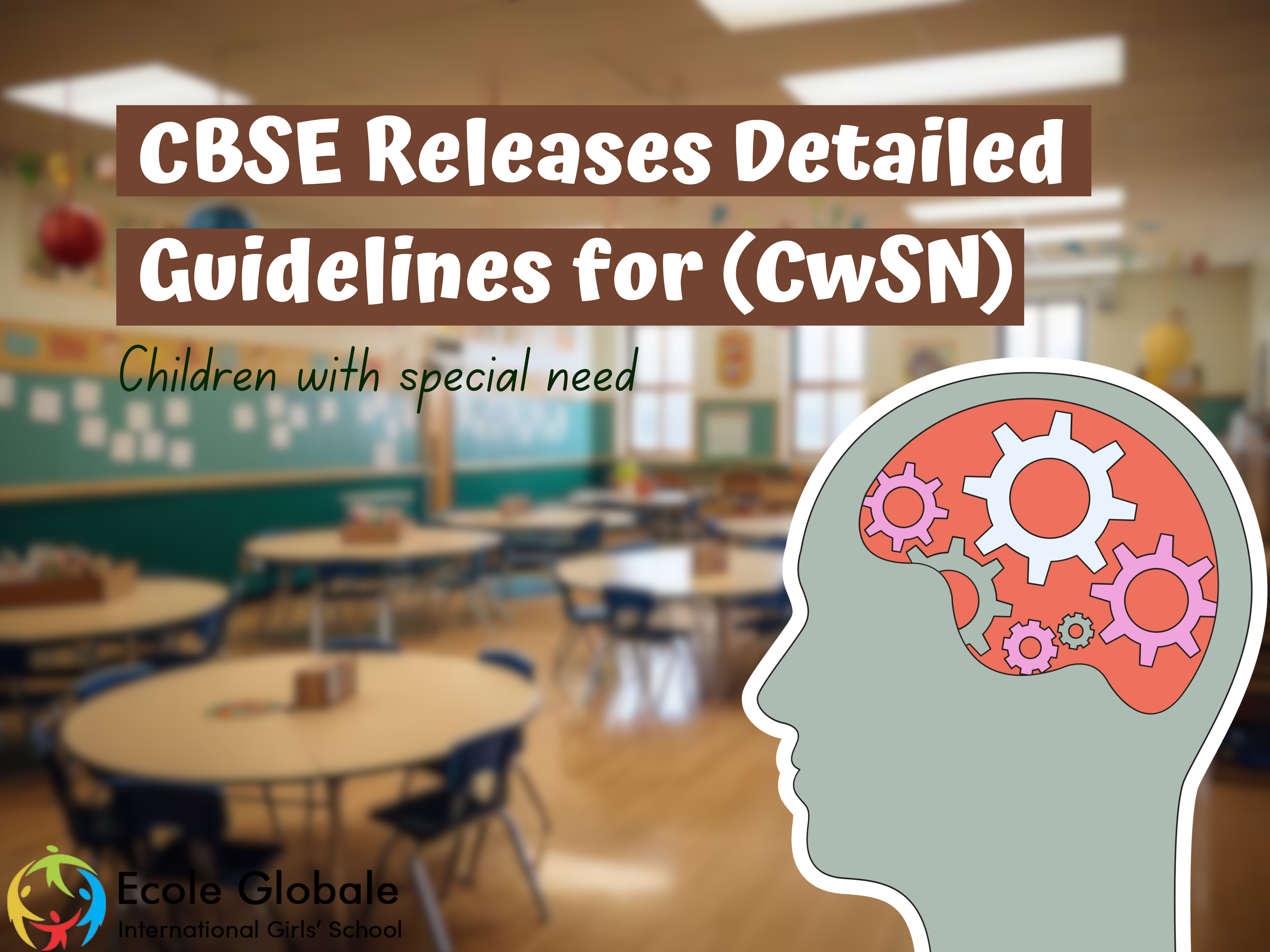The Central Board of Secondary Education (CBSE) has released comprehensive guidelines to ensure inclusive education and equal opportunities for Children with Special Needs (CwSN) across CBSE-affiliated schools. The revised guidelines aim to provide a more accessible and supportive learning environment for students with diverse needs and abilities.
Accessibility Measures

The new guidelines specify various infrastructure and accessibility requirements that schools must implement to cater to Children with Special Needs (CwSN). These include:
-
- Ramps: Schools must provide ramps with handrails at the entrance and in other key areas to enable easy movement for students using wheelchairs or with mobility challenges.
- Signage: Clear signage, including Braille and tactile indicators, must be installed to assist students with visual impairments in navigating the school premises.
- Lifts: Wherever feasible, schools should install lifts or elevators to ensure that students with physical disabilities can access all floors of the building.
- Accessible Toilets: Schools must have specially designed, accessible toilets equipped with grab bars, lowered sinks, and other features to accommodate the needs of CwSN.
Admission and Support

The guidelines also outline the admission process and support measures for Children with Special Needs (CwSN). Key highlights include:
-
- Admission Process:
- Schools must have a transparent admission policy that does not discriminate against Children with Special Needs (CwSN).
- Admission forms should have a section for parents to declare the child’s special needs, allowing schools to plan appropriate support.
- Schools cannot deny admission to CwSN solely based on their disability.
- Admission Process:
-
- Individualized Education Plan (IEP):
- Schools must develop an IEP for each CwSN, involving parents and relevant professionals, to address the student’s specific learning needs and challenges.
- The IEP should outline personalized goals, teaching methodologies, and assistive technologies required to support the student’s academic and overall development.
- Individualized Education Plan (IEP):
-
- Assistive Devices and Technologies:
- Schools should provide appropriate assistive devices, such as hearing aids, screen readers, or specialized software, to enable CwSN to participate actively in the learning process.
- Teachers should be trained to effectively utilize these assistive technologies in the classroom.
- Assistive Devices and Technologies:
-
-
- Capacity Building of Teachers:
- Regular training programs must be organized to sensitize and equip teachers with the necessary skills to address the diverse needs of CwSN.
- Teachers should be trained in inclusive teaching practices, assistive technologies, and behavior management strategies to create a more inclusive and supportive learning environment.
- Capacity Building of Teachers:
Inclusive Practices in the Classroom

The guidelines emphasize the importance of inclusive teaching practices to ensure that CwSN can actively participate and thrive in the classroom. Key recommendations include:
- Differentiated Instruction: Teachers should adapt their teaching methods, materials, and assessments to cater to the unique learning styles and abilities of CwSN.
- Peer Support: Schools should encourage peer-to-peer learning and mentoring programs to foster a culture of empathy, understanding, and support among students.
- Collaboration with Professionals: Schools should collaborate with special educators, occupational therapists, and other relevant professionals to provide comprehensive support to CwSN.
- Examination Accommodations: CwSN should be provided with appropriate accommodations, such as extra time, the use of assistive devices, or scribes, during examinations to ensure equitable assessment.
The implementation of these guidelines by CBSE-affiliated schools is a significant step towards creating an inclusive and accessible education system for children with diverse needs. By addressing infrastructure, admission, and teaching practices, the guidelines aim to empower Children with Special Needs (CwSN) and provide them with the necessary support to thrive and reach their full potential.









